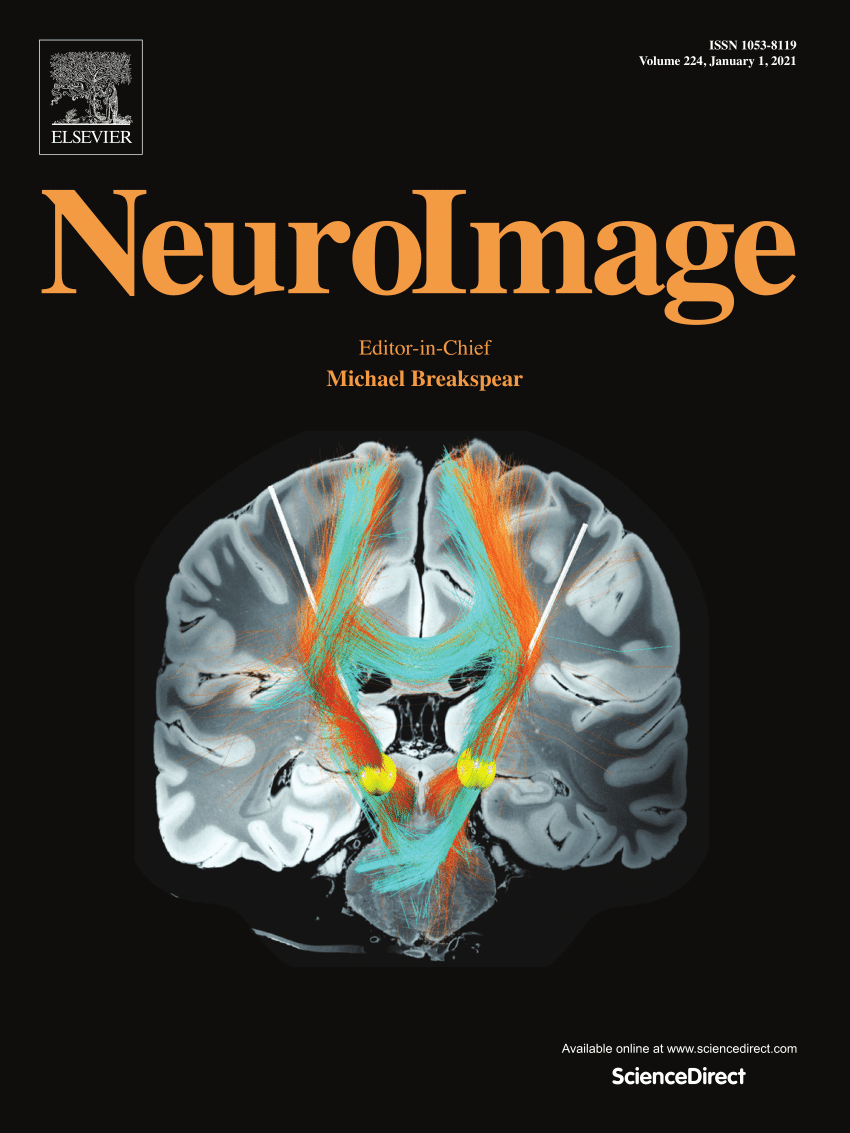Quantifying task-locked information transmission between cortical areas with TMS-EEG
IF 4.7
2区 医学
Q1 NEUROIMAGING
引用次数: 0
Abstract
Objective
This study aims to develop TMS-EEG (Transcranial magnetic stimulation combined with EEG) technology to detect task-locked neural network activation and dynamically quantify information transmission.
Approach
30 participants performed visually guided gap saccade tasks while TMS-EEG data were recorded, with the TMS pulses delivered to prefrontal cortex (PFC) and posterior parietal cortex (PPC) at different task stages. The directed transfer function (DTF) method was applied to TMS-EEG data to indicate the information flow. By analyzing the channel combinations associated with the PFC and PPC, we calculated differences in information flow within the alpha, beta, and gamma frequency bands to determine whether TMS-EEG could quantitatively characterize the direction of information flow between cortical areas.
Main results
Analysis of eye tracker data revealed that all participants successfully performed the saccade task, with a correct rate exceeding 90 %. The mean saccade latency was 132.25 ± 22.59 ms after target appearance. Stimulation of the PFC and PPC revealed significant differences in information flow in the gamma bands at different time points. Specifically, during the preparatory period, the C3 electrode acts as a hub for incoming information from O1, later transitioning to send information towards F4 and O1 post-target. Then, P3 emerges as a hub, sending data towards P4, with connectivity between them intensifying post 100 ms from the target's appearance.
Significance
This study utilized DTF values derived from TMS-EEG to characterize information flow between cortical areas during the gap saccade task. This approach provides a novel method for quantifying dynamic changes in connectivity and causality between cortical areas during task processing.
基于TMS-EEG的皮质区任务锁定信息传递定量研究。
目的:本研究旨在发展TMS-EEG(经颅磁刺激结合EEG)技术,检测任务锁定神经网络激活并动态量化信息传递。方法:30名被试在视觉引导下完成间隙扫视任务,同时记录TMS- eeg数据,在不同的任务阶段将TMS脉冲传递到前额叶皮层(PFC)和后顶叶皮层(PPC)。采用有向传递函数(DTF)方法对TMS-EEG数据进行信息传递。通过分析与PFC和PPC相关的通道组合,我们计算了α、β和γ频段内信息流的差异,以确定TMS-EEG是否可以定量表征皮层区域之间信息流的方向。主要结果:眼动仪数据分析显示,所有参与者都成功完成了扫视任务,正确率超过90%。目标出现后的平均扫视潜伏期为132.25±22.59 ms。刺激PFC和PPC在不同时间点的伽马波段的信息流有显著差异。具体来说,在准备阶段,C3电极作为从O1输入信息的枢纽,随后过渡到向F4和O1后靶发送信息。然后,P3作为一个集线器出现,向P4发送数据,在目标出现100毫秒后,它们之间的连接加强。意义:本研究利用TMS-EEG的DTF值表征脑皮层区域间的信息流。该方法为任务处理过程中皮层区域间连通性和因果关系的动态变化提供了一种新的量化方法。
本文章由计算机程序翻译,如有差异,请以英文原文为准。
求助全文
约1分钟内获得全文
求助全文
来源期刊

NeuroImage
医学-核医学
CiteScore
11.30
自引率
10.50%
发文量
809
审稿时长
63 days
期刊介绍:
NeuroImage, a Journal of Brain Function provides a vehicle for communicating important advances in acquiring, analyzing, and modelling neuroimaging data and in applying these techniques to the study of structure-function and brain-behavior relationships. Though the emphasis is on the macroscopic level of human brain organization, meso-and microscopic neuroimaging across all species will be considered if informative for understanding the aforementioned relationships.
 求助内容:
求助内容: 应助结果提醒方式:
应助结果提醒方式:


